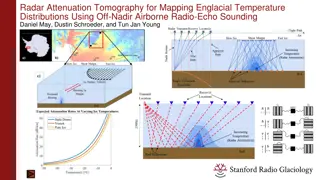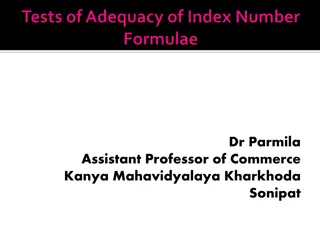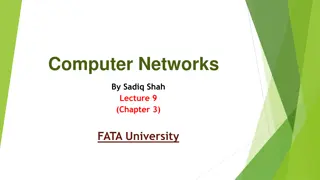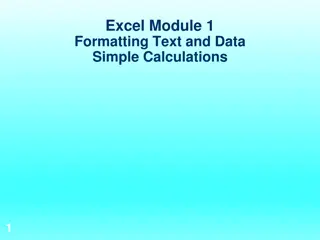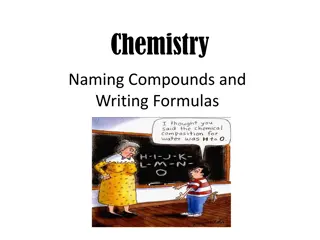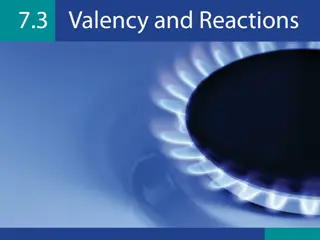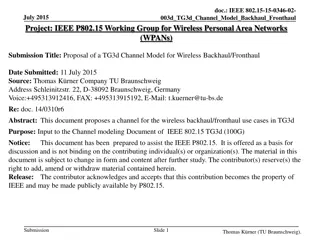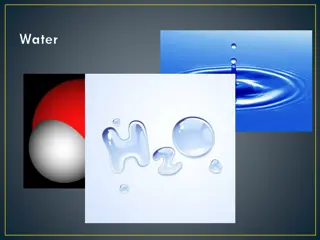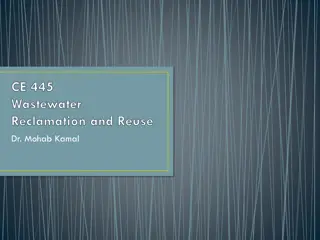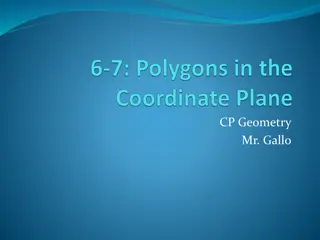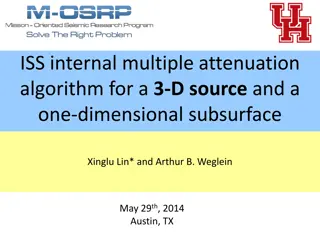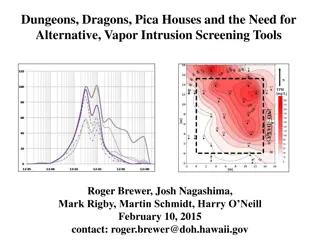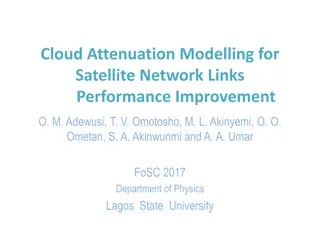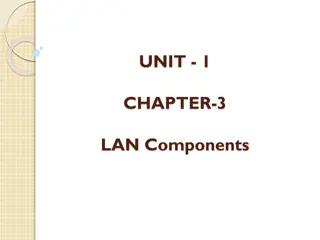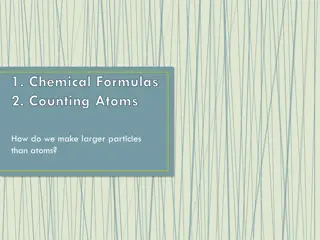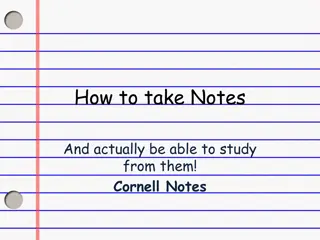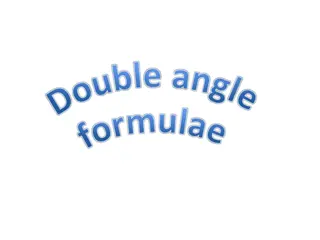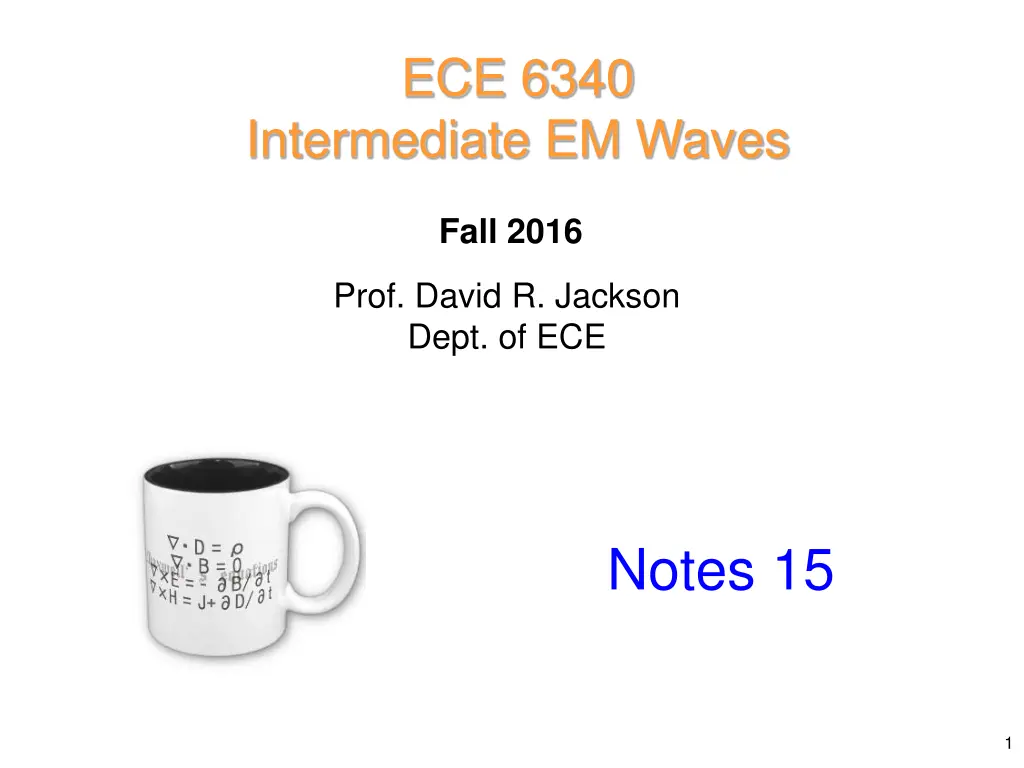
Understanding Attenuation Formulas in Transmission Lines
Explore the comprehensive discussion on attenuation formulas, power dissipation, and conductor loss in transmission lines. Learn about the power flow, energy conservation, and perturbational formulas for understanding electromagnetic waves in waveguiding systems.
Download Presentation

Please find below an Image/Link to download the presentation.
The content on the website is provided AS IS for your information and personal use only. It may not be sold, licensed, or shared on other websites without obtaining consent from the author. If you encounter any issues during the download, it is possible that the publisher has removed the file from their server.
You are allowed to download the files provided on this website for personal or commercial use, subject to the condition that they are used lawfully. All files are the property of their respective owners.
The content on the website is provided AS IS for your information and personal use only. It may not be sold, licensed, or shared on other websites without obtaining consent from the author.
E N D
Presentation Transcript
ECE 6340 Intermediate EM Waves Fall 2016 Prof. David R. Jackson Dept. of ECE Notes 15 1
Attenuation Formula z Waveguiding system (WG or TL): S Waveguiding system j z = = = z z ( , , ) ( , , ) H x y z ( , ) ( , ) x y e ( , ) ( , ) H x y e E x y z E x y e E x y e = e 0 0 j z z z H e 0 0 1 2 * 0 = z dS (0) ( ) P E H At z = 0: 0 f S 1 2 * 0 = 2 z z dS ( ) ( ) P z E H e At z = z : 0 f S 2
Attenuation Formula (cont.) Hence = 2 z ( ) (0) P z P e f f = 2 z Re ( ) Re (0) P z P e f f so = 2 z P P ( ) (0) z e f f 1 z If P P ( ) (0) (1 2 ) z z f f = P P (0) 2 (0) z f f 3
Attenuation Formula (cont.) P P P ( ) (0) 2 (0) z z f f f = z = z z 0 so P P (0) ( ) z f f P 2 (0) z f S From conservation of energy: l P P P (0) ( ) ( /2) z z z f f d where = power dissipated per length at point l P ( ) z z d 4
Attenuation Formula (cont.) Hence l P ( / 2) z z d P 2 (0) z f As z 0: l P (0) d P = 2 (0) f Note: Where the point z = 0 is located is arbitrary. 5
Attenuation Formula (cont.) General formula: This is a perturbational formula for the conductor attenuation. l P ( ) z 0 d P = 2 ( ) z The power flow and power dissipation are usually calculated assuming the fields are those of the mode with PEC conductors. 0 f z0 fz P ( ) 0 6
Attenuation on Transmission Line Attenuation due to Conductor Loss = c The current of the TEM mode flows in the z direction. l P d P = 2 f J sz z C A L C = + C C C B A B z 7
Attenuation on Line (cont.) Power dissipation due to conductor loss: 1 1 2 2 = l P R J dS d s sz z S 1 1 2 ( ) 2 = Power flowing on line: ( ) z R J dl s sz z 1 2 C 2 = P Z I 1 2 0 f ( ) 2 = R J dl s sz (Z0 is assumed to be approximately real.) C S z CA I A C= CA+ CB B CB 8
Attenuation on Line (cont.) Hence 1 I R Z ( ) 2 = s J dl c sz 2 2 + 0 C C A B 9
R on Transmission Line R z L z I C z G z z Ignore G for the R calculation ( = c): 1 2 1 2 l P 2 = l P R I d P = d c 2 f 2 = P Z I 0 f 10
R on Transmission Line (cont.) We then have R Z = c 2 0 Hence = (2 ) R Z 0 c Substituting for c 1 I 2 = ( ) l R R J dl s sz 2 C 11
Total Attenuation on Line Method #1 = + c d = When we ignore conductor loss to calculate d, we have a TEM mode. d TEM = = = TEM z k j k k jk d = k so d = + k Hence, c 12
Total Attenuation on Line (cont.) Method #2 = Re ( ) = + j L G + j C Re ( )( ) R where = (2 ) R Z 0 c ( ) = G C c c The two methods give approximately the same results. 13
Example: Coax Coaxial Cable z I a A I b r B 1 I R Z ( ) ( ) 2 2 = + s J dl J dl c sz sz 2 2 0 C C A B I = ) A J sz 2 a I = ) B J sz 2 b 14
Example (cont.) Hence 2 2 2 2 1 I R Z I I = + s ad bd c 2 2 2 2 a b 0 0 0 1 1 R Z = + s 2 2 2 a b 0 Also, b a = ln 0 Z 0 2 r b a b a Hence + 1 r R b (nepers/m) = s c 2 ln 0 15
Example (cont.) Calculate R: = (2 ) R Z 0 c 1 1 R Z = + (2 ) Z s 0 2 2 2 a b 0 1 a 1 b R = + s 2 1 1 a 1 b = + 2 16
Example (cont.) 1 a 1 b = + R 2 2 This agrees with the formula obtained from the DC equivalent model. (The DC equivalent model assumes that the current is uniform around the boundary, so it is a less general method.) b a DC equivalent model of coax 17
Internal Inductance An extra inductance per unit length L is added to the TL model in order to account for the internal inductance of the conductors. This extra (internal) inductance consumes imaginary (reactive) power. The external inductance L0 accounts for magnetic energy only in the external region (between the conductors). This is what we get by assuming PEC conductors. = + L L L 0 Internal inductance L0 z R z L z C z G z 18
Skin Inductance (cont.) Imaginary (reactive) power per meter consumed by the extra inductance: 1 2 ( ) 2 = L I IP Circuit model: Equate 1 2 ( ) 2 = P X J dl Skin-effect formula: I s sz + C C A B L0 z R z L z I C z G z 19
Skin Inductance (cont.) Hence: 1 2 1 2 1 I ( ) 2 = L X J dl s sz 2 + C C A B 1 2 1 I ( ) 2 = R J dl s sz 2 + C C A B 1 2 = R 20
Skin Inductance (cont.) 1 2 1 2 = L R Hence = X R or R = L 21
Summary of High-Frequency Formulas for Coax Assumption: << a 1 a = HF a R 2 = + HF HF a HF b R R R 1 b = HF b R 2 1 a ( ) = = HF a HF a X L 2 = + HF HF a HF b L L L 1 b ( ) = = HF b HF b X L 2 22
Low Frequency (DC) Coax Model At low frequency (DC) we have: 1 = + DC DC a DC b 1 R R R = DC a = R DC b R ( ) ( ) 2 a 2 bt = + DC DC a DC b L L L a L = DC 0 Derivation omitted 8 t = c - b a c b 4 ln c b 2 2 3 b c b = + DC b 0 L ( ) ( ) 2 2 2 2 4 c 2 2 c b c 23
Tesche Model This empirical model combines the low-frequency (DC) and the high-frequency (HF) skin-effect results together into one result by using an approximate circuit model to get R( ) and L( ). F. M. Tesche, A Simple model for the line parameters of a lossy coaxial cable filled with a nondispersive dielectric, IEEE Trans. EMC, vol. 49, no. 1, pp. 12-17, Feb. 2007. Note: The method was applied in the above reference for a coaxial cable, but it should work for any type of transmission line. (Please see the Appendix for a discussion of the Tesche model.) 24
Twin Lead y Twin Lead a x h Assume uniform current density on each conductor (h>>a). DC equivalent model y a x h 1 a 1 a + R 2 2 25
Twin Lead y Twin Lead a x h 1 a 1 a 1 + = R 2 2 a or s R R a (A more accurate formula will come later.) 26
Wheeler Incremental Inductance Rule y n 1 I 2 = ( ) l R R J dl x s sz 2 C B A Wheeler showed that R could be expressed in a way that is easy to calculate (provided we have a formula for L0): 1 L n = 0 R R s 0 L0 is the external inductance (calculated assuming PEC conductors) and n is an increase in the dimension of the conductors (expanded into the active field region). H. Wheeler, "Formulas for the skin-effect," Proc. IRE, vol. 30, pp. 412-424, 1942. 27
Wheeler Incremental Inductance Rule (cont.) The boundaries are expanded a small amount n into the field region. y n Field region x n PEC conductors B A L0= external inductance (assuming perfect conductors). 1 L n = 0 R R s 0 28
Wheeler Incremental Inductance Rule (cont.) Derivation of Wheeler Incremental Inductance rule y n Field region (Sext) 1 I 2 = ( ) l R R J dl s sz 2 x C n B A PEC conductors 1 4 1 4 2 = W L I 0 H 2 = 0 2 L H dS 2 0 = I W H dS S 0 H ext S ext Hence ( ) 2 = 0 2 L n H dl 0 I We then have C L n 2 2 = = ( ) l H dl J dl 0 0 2 0 2 sz I I C C 29
Wheeler Incremental Inductance Rule (cont.) y Field region(Sext) n 1 I 2 = ( ) l R R J dl s sz 2 x C n B A PEC conductors From the last slide, 1 I 1 L n L n 2 2 = = ( ) l ( ) l J dl J dl 0 0 2 0 sz sz 2 I 0 C C Hence 1 L n = R R 0 s 0 30
Wheeler Incremental Inductance Rule (cont.) Example 1: Coax a b a = ln 0 L 0 b 2 1 1 1 1 a L n L a L b b a b a ( ) ( ) b = + = 1 0 0 0 0 0 2 2 2 a 1 a 1 b = + 0 2 1 1 1 L n = + = 0 R R R R s s 2 2 a b 0 31
Wheeler Incremental Inductance Rule (cont.) y , Example 2: Twin Lead 0 0 a x h From image theory (or conformal mapping): 1 = C 0 h a 1 cosh 2 h a = 1 cosh = Z 0 0 L C 0 2 h a = 1 h a cosh 0 L ln , Z a h 0 0 2 0 32
Wheeler Incremental Inductance Rule (cont.) y Example 2: Twin Lead (cont.) , 0 0 a h a = 1 cosh 0 L x 0 2 Note: By incrementing a, we increment both conductors simultaneously. h h a 1 1 L n L a h a h 2 = = = = 1 cosh 0 0 0 0 0 a 2 2 2 a a 2 2 h a h a 1 1 2 2 h a 1 L n 1 2 = 0 R R = R R s s a 2 h a 0 1 2 33
Wheeler Incremental Inductance Rule (cont.) y Example 2: Twin Lead (cont.) a x Summary h a = h 1 cosh Z 0 0 2 1 = C 0 h a 1 cosh h a 2 1 2 = R R h a s a 2 = 1 h a cosh 0 L 1 0 2 2 ( )tan = G C 34
Attenuation in Waveguide We consider here conductor loss for a waveguide mode. A waveguide mode is traveling in the positive z direction. z S c S z C 1 1 2 2 = l P R J dS l P s d s d P z = S c c 2 1 2 f ( ) 2 = R J dl s s C 35
Attenuation in Waveguide (cont.) or 1 2 2 = R n H dl l P d s C Power flow: 1 2 = * t P z dS Re ( ) E H f t S Next, use ( ) = z H = WG WG TE TM ( ) or E Z Z Z Z 0 0 t t Hence 1 = z H * t WG P z dS Re ( ) Z H 0 f t 2 S 36
Attenuation in Waveguide (cont.) ( ) ( ) ( ) Vector identity: B C = A B A C C A B z H = z H = + * t * t * t * t z z z H H z ( ) ( ) ( ) ( ) H H H z H t t t t 2 = H t Hence 1 2 2 = WG P Re Z H dS 0 f t S Assume Z0WG = real ( f > fcand no dielectric loss) 1 2 2 = WG P Z H dS 0 f t S 37
Attenuation in Waveguide (cont.) Then we have 2 n H dl R Z = s WG C c 2 2 H dS 0 t S y n S x C 38
Attenuation in Waveguide (cont.) Total Attenuation: = + c d Calculate d (assume PEC wall): = = 2 2 c k j k k z so = 2 2 c Im k k d where ( ) r = = 1 tan k k j 0 c r 39
Attenuation in Waveguide (cont.) TE10 Mode y r = 1 = k k 0 rc 1 b = rc x 0 a rc 2 R f f b a = + 1 2 s c c ( ) ( ) 2 Re 1 / b f f c 2 = 2 Im k d a 40
Attenuation in dB z S Waveguiding system (WG or TL) z = 0 z j z = z ( ) (0) V z V e e ( ) (0) V z V = = z dB 20log 20log ( ) e 10 10 ln ln10 x x = log Use 10 41
Attenuation in dB (cont.) so z ln( ) e = dB 20 ln10 ( ) z = 20 ln10 Hence 20 ln10 = Attenuation [dB/m] 42
Attenuation in dB (cont.) or ( ) = Attenuation 8.6859 [dB/m] 43
Appendix: Tesche Model The series elements Za and Zb (defined on the next slide) account for the finite conductivity, and give us an accurate R and L for each conductor at any frequency. Za Zb = + + j L Z Z Z G C L0 0 a b = + j C Y G z 2 c b a G C = 0 rc C = = = ln 0 tan L b a 0 2 ln c 44
Appendix: Tesche Model (cont.) Z a Inner conductor of coax DC aL The impedance of this circuit is denoted as DC a R HF HF a R aL ( ) = + Z R j L a a a Z b Outer conductor of coax The impedance of this circuit is denoted as DC bL ( ) = + Z R j L DC b R b b b HF HF b R bL 45
Appendix: Tesche Model (cont.) At low frequency the HF resistance gets small and the HF inductance gets large. DC aL DC a R HF HF a R aL Inner conductor of coax DC aL DC a R HF HF a R aL 46
Appendix: Tesche Model (cont.) At high frequency the DC inductance gets very large compared to the HF inductance, and the DC resistance is small compared with the HF resistance. DC aL DC a R HF HF a R aL Inner conductor of coax HF a R HF aL 47
Appendix: Tesche Model (cont.) The formulas are summarized as follows: 1 1 = = DC a DC R b R ( ) ( ) 2 a 2 bt c b 4 ln c 2 2 3 b c b a L = = + DC DC b 0 0 L ( ) ( ) 2 8 2 2 2 4 c 2 2 c b 1 a 1 b ( ) ( ) = = = = HF a HF a HF b HF b R L R L 2 2 48

